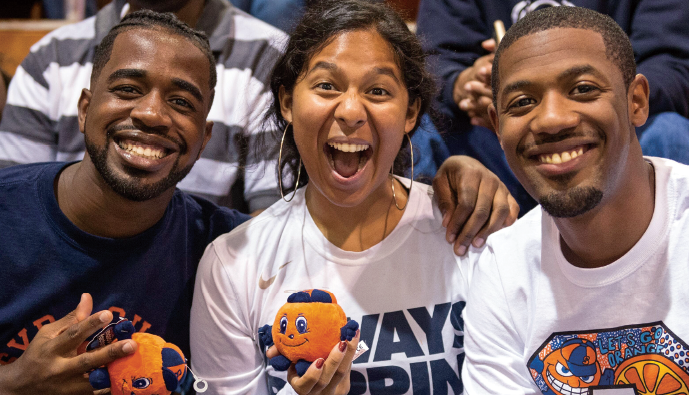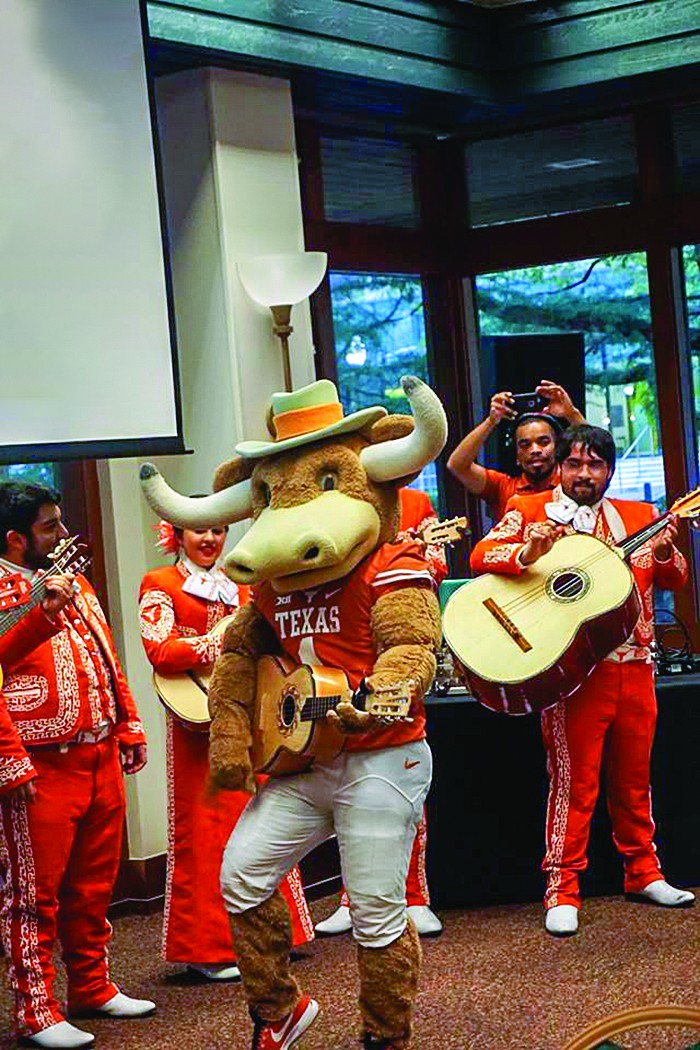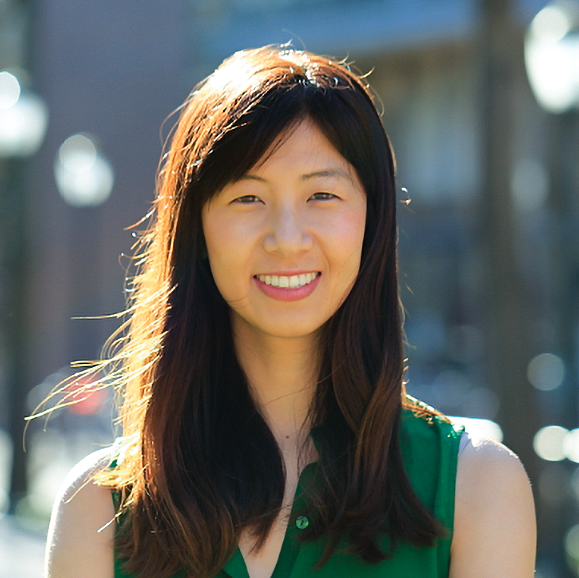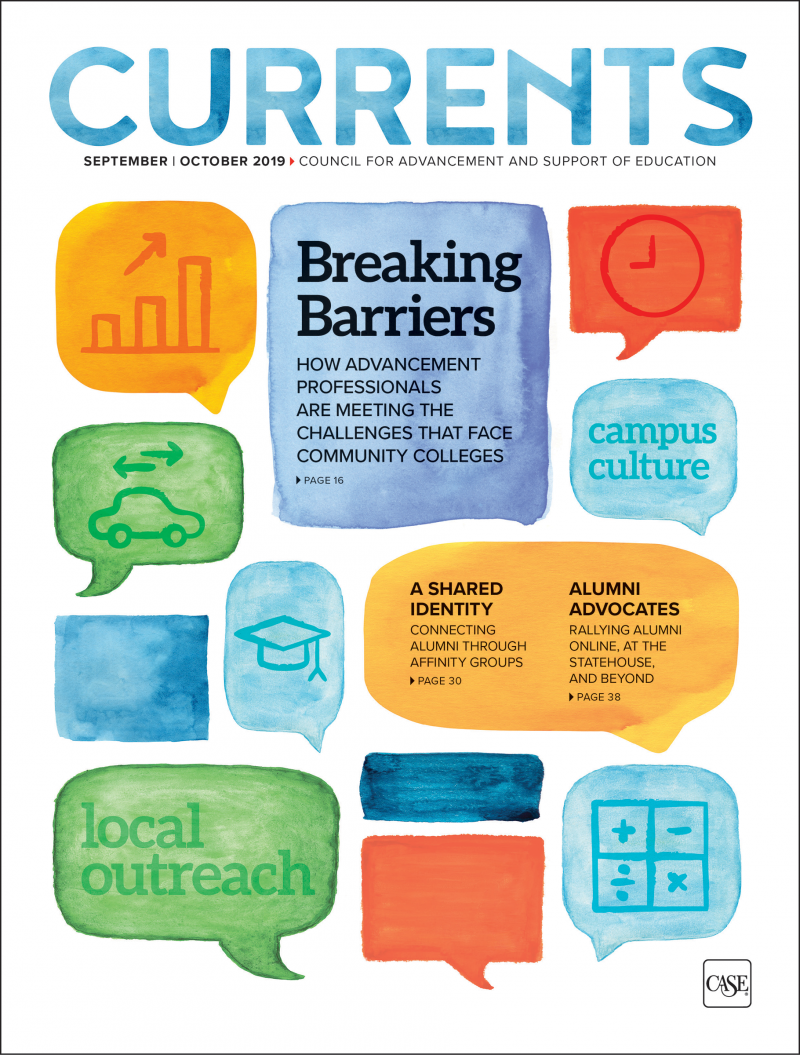
A Shared Identity
As a student at Swarthmore College, Angela Meng had been involved with the school’s multicultural center and was president of the Asian student organization. But once she graduated and began her career at an economic consulting firm in New York, she missed the support she got at Swarthmore.
“I wished I had a group of like-minded individuals with me after college to help grapple with questions like: What does it mean to be an underrepresented minority in the workplace? How do I advocate for policy as a woman of color? I didn’t really have any allies in this. I thought, how do we create that for young alumni?” says Meng, who now is an associate brand manager for General Mills in Minneapolis.
She also felt that she wasn’t getting news from Swarthmore about topics important to her as an alumna, such as the multicultural center getting a new dean and what was happening with Heritage Month on campus.
So when Caitlin Halloran Edwards, Swarthmore’s assistant director for volunteers, swung through New York to meet alumni of the Pennsylvania school on just her second day on the job, Meng brought up the questions she was grappling with. Over the next five years, she, Edwards, and others hammered out details, and the Alumni of Color group launched in May.
While some schools are just beginning to form affinity groups that reach out to diverse alumni, others have had similar groups for decades, finding that they not only help increase attendance at alumni events but also help with recruitment and mentoring of students—and fundraising for scholarships and other causes.
More Diverse Alumni

Increasing diversity on campus means a growing number of alumni of diverse cultural backgrounds.
“We’ve talked to a lot of other institutions. A trend in the industry and at our institution is that student bodies grow and change and diversify. How are we looking at this as we prepare for how our alumni are going to be in 10 years, in 20 years?” asks Megan Stevens, director of regional and affinity strategy for Lehigh University’s alumni office.
Statistics bear her out: According to the National Center for Education Statistics, the percentage of black recent high school graduates enrolled in U.S. colleges grew from 43% in 1980 to 59% in 2017. Similarly, enrollment of Latino students increased from 52% in 1980 to 61% in 2017. The percentage of Asian students enrolling in college over the same time period held fairly steady at around 82%.
"A growing number of schools opening their doors to nonwhite students in the 1960s helped pave the way to today's diversity, but often the transition was rocky, with some alumni feeling disenfranchised from their alma maters," says Archie Ervin, president of National Association of Diversity Officers in Higher Education, who is also vice president and chief diversity officer at the Georgia Institute of Technology.
“Institutions weren’t getting engagement from minority alumni, nor with giving, nor board volunteers,” he says. “Most of those reticent individuals, inwardly, really want to be proud of their alma maters but weren’t proud of their experience. Some had to engage in healing and look at their schools in a present-day context.”
By the 1990s, Ervin says that alumni themselves had begun starting ad hoc affinity reunions. Today, he says, “I don’t know of any major university that doesn’t have an affinity group.”
"A growing number of schools opening their doors to nonwhite students in the 1960s helped pave the way to today’s diversity."
Melina Armstead, director of alumni chapters and diversity initiatives at the University of California, Berkeley, says her school experienced some of these difficulties.
“My biggest challenge is for alumni who maybe didn’t have the best experience when here. It’s a little difficult to rally them up to come back and support Cal. What’s most motivating is talking with them and saying they can help ensure the students who look like them and feel like them experience Cal in a better way than they did,” she says.
Berkeley has a robust roster of groups, including 10 chapters for Latino alumni and separate groups for those with Filipino, Korean, Chinese, and even Armenian heritage. Some are more loosely affiliated with the university than others. The university is unusually diverse—about 46% of its students are white.
Campus Celebrations
No matter the size of the school or number of affinity groups, one of the primary activities is bringing alumni back to campus as a way to engage them.
Syracuse University in New York has a triennial event called Coming Back Together to encourage diverse alumni to revisit their alma mater. The four-day event, held in October, is growing in popularity. Three hundred alumni attended the first one in 2014, and the school is expecting up to 2,000 in 2020, as Syracuse celebrates its 150th anniversary. During the most recent Coming Back Together event, half of the 1,000 attendees had never returned to campus before, estimates Rachel Vassel, assistant vice president of the office of multicultural advancement.
“Sometimes people just want to connect with people with similar backgrounds because it’s comfortable and welcoming. It’s very appealing to underserved groups. We want this to be the first step for alumni activities and giving,” she says.
Syracuse’s black and Latino fraternities and sororities celebrate anniversaries and connect during the event. In 2017, members of broadcast journalist Soledad O’Brien’s sorority, Delta Sigma Theta, hosted her at the celebration, where she gave a lecture.
The University of Pennsylvania also has a triennial event, called Penn Spectrum Weekend, a conference and celebration that will next take place this October. The event brings together alumni for dialogue centered on issues of cultural identity and topics specific to black, Latino, Native American, Asian, and LGBTQ+ communities, each of which has its own alumni group. During the 2016 event, panels discussed everything from the Black Lives Matter movement to diversity in professional sports to freedom of expression on campus.
Marvin Rocha, director of multicultural outreach for Penn, says, “When we hit the road, what we hear from some alumni is that Penn Spectrum Weekend is the first event in a long time—or ever—that they have attended.”
A Helping Hand for Students

The University of Texas’s annual Fiesta is planned by the Austin school’s Hispanic Alumni Network and features entertainment, bands, and the game lotería, a kind of Mexican bingo. About 18% of the school’s alumni who identify as Latino belong to the network.
The primary goal of the Fiesta, which costs US$100 to attend, is fundraising for current Latino UT students, who make up about 20% of the student body. But the retention rate is low, and students often drop out for financial reasons, says Casilda Clarich, president of the Hispanic Alumni Network.
“Many, many of our students are first generation. We always want to reach back and pull up these students and say, ‘Here are lessons we learned,’” says Clarich, who worked several jobs and didn’t receive enough financial aid as a student at UT. “I’m indicative of other alumni. We relate to the students. We can relate to your challenges, barriers, fears, etc. How can we help you? That mission to help them bonds us together.”
Alumni at Syracuse contribute to the school’s Our Time Has Come scholarship, which has raised millions through the Office of Multicultural Advancement since 1987. Fifty-seven black and Latino students were awarded scholarships for the 2018–19 academic year. These students are required to volunteer during the Coming Back Together event.
“That’s purposeful because we want them to interact with donors to understand what philanthropy is about,” says Vassel.
Penn alumni also help fund a scholarship for black students. The James Brister Society, named for Penn’s first black graduate, is a diverse group of University of Pennsylvania alumni volunteer leaders who graduated at least a decade ago. They hold an annual fundraising campaign to raise money for scholarships for students of color. In addition, the Familias La Casa Latina Mentorship Program brings together a small “family” consisting of an incoming student and a current undergraduate to be mentored by a graduate student and an alumna or alumnus.
The Black Alumni Advisory Committee at Miami University also reaches out to students. The network, for graduates of the school in rural Oxford, Ohio, began in 1985.
“Blacks couldn’t even live on campus until the 1940s, and in the early days it was tremendous work to get people to come back to campus in large numbers,” says Seth Seward, who is black and is assistant director of alumni relations. His parents graduated from Miami in the 1980s, and he graduated in 2011. The percentage of black students has remained virtually unchanged at about 3% throughout this time, he says.
In what Miami terms “send-offs,” members of the advisory committee work with the admissions office to visit municipalities throughout Ohio to meet with students who are going to start at Miami to give them advice not just about academics at the school, but also about being a black student.
"We can relate to [students'] challenges, barriers, fears, etc. ... That mission to help them bonds us together."
“They are going to the middle of nowhere. The lack of diversity is a challenge. It’s challenging, especially when you’re the only student of color in the classroom or when you’re from an urban setting. It’s a bit of a jolt,” he says. “I believe the Black Alumni Advisory Committee’s purpose is to showcase our black alumni who have done well despite those challenges and give students some confidence before they even start at the university. They see that you can adjust and are successful over the years, forming bonds on campus.”
Miami also uses this strategy to recruit a greater diversity of students from not just Ohio but around the country. Currently, just over 10% of the students are black, Latino, or Asian, and Seward says he would like to see that number increase.
Lehigh works to recruit students during its Diversity Life weekend in April for admitted students who are still trying to decide if the school is for them. Participants in the 500-member decade-old group BALANCE (Black and Latino Alumni Network for Community and Equity) are part of an alumni panel and speak at the weekend’s events. “We want to show there’s a presence and connection from when they were students and now as alumni,” says Stevens.
Some universities in the U.K. are also grappling with new ways to engage diverse alumni. Alumni of the University of Oxford, where 1.9% of admitted undergraduates in 2017 were black, started the Oxford Black Alumni Network that year.
“We wanted current students to know that there were people who looked like them who had graduated from Oxbridge and who were pursuing interests in a range of fields,” says co-founder Daniel Stone.
“I enjoyed my time at Oxford. I made friends from all sorts of different backgrounds and expanded the love I have for academic thinking,” he continues. At the same time, Stone says, “I think there are things that Oxford could improve, and it should be responsive to the varied needs and experiences of students, whether because of their ethnicity, class, or any other characteristic.”
The Black Alumni Network has an annual dinner and book group. It recently launched an entrepreneurship mentoring program and has expanded its work beyond recruiting new students to Oxford to a program matching alumni with teachers around the country to talk about student success and higher education in general.
“The tangible benefits seen by students and alumni make [creating] new connections easier. Current students [of color] are involved as ambassadors of institutions. That’s something that was not there before."
But simply having these affinity groups doesn’t mean it’s always easy for alumni to feel included.
“Everyone’s trying to figure out the best way to reach alumni. Sometimes the culture chapters don’t feel heard on the campus. Alumni don’t feel invited to decision-making. How do we involve them in homecoming and connect them to other chapters and the larger alumni association as a whole?” asks Anh Tran, Cal Alumni Association’s chief program officer.
Lehigh’s Megan Stevens also feels some of the same frustrations.
“Some purposeful programming has been to reach out to under-engaged people, but we’ve been met with radio silence, or they said, ‘My experience was not that positive, and I don’t want to connect,’” she says. “We use our alumni to have a conversation, asking, how can we connect you back to Lehigh? As we move forward to the 10th anniversary celebration [of Coming Back Together], we are looking for some innovative ways to bring more into the fold.”
But Ervin, with the National Association of Diversity Officers in Higher Education, thinks plenty of progress has been made in engaging diverse alumni who might otherwise have continued to feel a disconnect with their university. And they have inspired students as well.
“The tangible benefits seen by students and alumni make [creating] new connections easier. Current students [of color] are involved as ambassadors of institutions. That’s something that was not there before. They are involved in student government. You also see a more visible presence on alumni institutional boards and in philanthropy, he says. A lot of this is the modern-day manifestations of early efforts to engage alumni, and I think it will only grow stronger.”
Case Study: Starting an Affinity Group

SWARTHMORE ALUMNA ANGELA MENG was instrumental in helping the school form its new Alumni of Color group.
Swarthmore’s five-year path to starting Alumni of Color began with alumna Angela Meng sharing her concerns about how to connect in a meaningful way to her alma mater. Black Swarthmore alumni had created a network in 2013 that is run primarily autonomously by alumni. But Meng and others wanted another organization that would serve a larger cross-section of diverse former students.
“We deliberately wanted to spend a lot of time on what would go into it so it will make a lasting impact,” says Caitlin Halloran Edwards, Swarthmore’s assistant director for volunteers.
In 2016, Swarthmore’s board of directors gave the formation of the group a thumbs-up. But then came some thorny questions. What should it be called? What should the balance of organizing the group be between Swarthmore staff and alumni?
Edwards says they wanted to work in tandem to develop the group with alumni rather than present a fully formed plan.
“We are also making sure we have generations of alumni involved. The college is different with each new generation of students,” she says.
Last year, Swarthmore included information about the nascent group in a newsletter mailed to 15,000 alumni and asked what they wanted out of the group, from events to mentoring.
Three hundred alumni responded and 88 offered to volunteer with the group. “A lot of people sent ‘love’ notes,” says Meng. Alumni as far back as the 1940s responded enthusiastically. From a range of potential work for the group, “far and away respondents were interested in connecting with students. Many don’t know what the ask is going to be but are happy to help.”
Alumni of Color held an open house during Swarthmore’s alumni weekend this summer and is poised to begin activities soon.
“The hardest part is getting started,” says Meng. “Where can we take this group in the next five to 10 years? We want to create an impact, a voice for alumni in the future. We want something that will live beyond us.”
Opening Image Credit: University of Oxford
About the author(s)
Barbara Ruben was a senior content creator at CASE.
Tags
Article appears in:

September - October 2019
Breaking Barriers: How advancement professionals are meeting the challenges that face community colleges. Also, a shared identity of connecting alumni through affinity groups, and how alumni advocates are rallying alumni online, at the statehouse, and beyond.